#Sundance Film Festival: Asia
Explore tagged Tumblr posts
Text
Sundance Film Festival: Asia 2024 Brings Global Talent to Taipei
The 2024 Sundance Film Festival: Asia is set to captivate audiences with an exciting lineup of films and shorts, showcasing a diverse range of stories from around the globe. Running from August 21 to 25 at SPOT-Huashan in Taipei, Taiwan, the festival promises a rich cinematic experience that highlights the innovative spirit of independent filmmaking. A Diverse Array of Films The festival will…
#A New Kind of Wilderness#Astrid Rondero#Caroline Lindy#Documentaries#feature films#Fernanda Valadez#film awards#film events Taipei#Film Festival#film festival lineup#film premieres#G2Go Entertainment#Good One#Independent Films#international cinema#Josh Margolin#Kneecap#Little Death#Porcelain War#Rich Peppiatt#Sean Wang#Short Films#Sujo#Sundance#Sundance 2024#Sundance Asia tickets#Sundance Film Festival: Asia#Sundance Institute#Taipei film festival#Taiwanese films
0 notes
Text
[For Immediate Release] Â 2024 Sundance Film Festival: Asia reveals Short Film Competition Program, Screenwriters Intensive Projects, and Panel Events set for August 21-25 Â TICKETS ON SALE NOW: WWW.SUNDANCEFFASIA.COM Â TAIPEI, TAIWAN, August 7, 2024 â With two weeks to go until Sundance Film Festival: Asia in Taipei, G2Go Entertainment and the nonprofit Sundance Institute announced today…
0 notes
Text
Exploring the Rich Tapestry of Desi Cinemas A Journey Through South Asian Storytelling
Desi cinemas, a term that encompasses the diverse and dynamic film industries of South Asia, have long been a source of entertainment, reflection, and cultural expression. From the vibrant Bollywood to the poignant storytelling of regional cinema, the cinematic landscape in the Indian subcontinent is as varied as the cultures that make it up. But beyond the glitz and glamour of mainstream cinema, Desi films offer deep insights into societal norms, values, and the complex human experiences of millions. This blog post aims to explore the multifaceted world of Desi cinemas, shedding light on its evolution, impact, and significance on both local and global stages.
The Roots: A Rich History of Cinema in South Asia Cinema in South Asia has a history that dates back over desia century. The first recorded instance of a film in India was Raja Harishchandra, a silent feature directed by Dadasaheb Phalke in 1913. Though it was a modest beginning, it marked the birth of a cinematic tradition that would go on to thrive in the decades to follow.
Beyond Bollywood: A World of Diverse Cinemas While Bollywood may be the most internationally recognized of the Desi film industries, the South Asian film world is much more expansive. From Kollywood in Tamil Nadu to Tollywood in West Bengal and Andhra Pradesh, regional cinemas have developed distinct identities and loyal fanbases over the years.
Kollywood (Tamil Cinema): Known for its action-packed dramas, poignant family stories, and larger-than-life heroes, Tamil cinema has produced legendary filmmakers like Mani Ratnam and Rajinikanth, who is often referred to as the "Superstar" of Indian cinema. The Tamil film industry often explores themes of social justice, politics, and romance, with a mix of commercial appeal and artistic storytelling.
Tollywood (Telugu Cinema): With its vibrant storytelling and unique approach to drama, Tollywood has become an influential force, especially in the Telugu-speaking regions of India. Films like Baahubali and RRR have not only dominated the Indian box office but have also gained global recognition, pushing the boundaries of visual effects and scale in Indian filmmaking.
Mollywood (Malayalam Cinema): Considered one of the most artistically rich and experimental film industries, Malayalam cinema is known for its nuanced narratives, intricate character studies, and thought-provoking social commentaries. Filmmakers like Adoor Gopalakrishnan and Lijo Jose Pellissery have won critical acclaim for their films, which often tackle complex issues like class, identity, and morality.
Other Regional Cinemas: Bengali cinema, Punjabi cinema, Marathi cinema, and many other regional film industries continue to thrive, each with its own unique voice, style, and audience. These films often reflect the culture, traditions, and social issues particular to their region, adding layers of diversity to the broader South Asian cinematic landscape.
Desi Cinema on the Global Stage The reach of Desi cinema extends far beyond the Indian subcontinent. In recent years, South Asian films have gained a significant foothold in international film festivals, with movies like The Lunchbox (India), Masaan (India), and Court (India) winning awards and acclaim in prestigious festivals such as Cannes, Venice, and Sundance. This shift has led to a growing global audience for Indian and South Asian films, bringing attention to stories that go beyond the typical Bollywood formula.
In the West, Bollywood has also seen a surge in popularity, with films like Lagaan, Dilwale Dulhania Le Jayenge, and 3 Idiots garnering massive audiences, especially in the diaspora communities. Today, Bollywood stars like Shah Rukh Khan, Priyanka Chopra, and Deepika Padukone have crossed over into international markets, becoming global icons in their own right.
Simultaneously, South Asian cinema has also found its place in the global arthouse scene. Directors like Asghar Farhadi (Iran), Mira Nair (India), and Gurinder Chadha (UK/India) have crafted stories that resonate with a wide variety of audiences, exploring themes of migration, identity, and cultural clash in today’s interconnected world.
The Future of Desi Cinemas: Innovation, Diversity, and Challenges The future of Desi cinemas looks promising, though not without challenges. The rise of digital streaming platforms such as Netflix, Amazon Prime Video, and Disney+ Hotstar has revolutionized the way South Asian films reach audiences. Now, films that may have once struggled to find distribution are reaching viewers worldwide, allowing niche films, regional cinemas, and experimental filmmakers to flourish.
However, this rapid digitization has also brought with it new pressures. The dominance of commercial cinema, with its focus on spectacle and formulaic narratives, threatens to overshadow the more independent, regional, and niche voices in the industry. Filmmakers must navigate this landscape carefully, balancing commercial appeal with creative freedom.
Moreover, while South Asian films have made a mark on the international stage, the industry must continue to evolve and address contemporary issues, from representation of marginalized groups to the growing influence of global cinema trends. Filmmakers and actors will need to explore new ways to tell authentic, diverse stories that resonate with global audiences while staying rooted in their unique cultural contexts.
Conclusion: The Soul of Desi Cinema At its heart, Desi cinema is a reflection of the diverse cultures, languages, and experiences of the people of South Asia. Whether it's the larger-than-life spectacles of Bollywood, the intimate, poignant films of Malayalam cinema, or the socially conscious narratives of Bengali and Tamil cinema, Desi films continue to captivate audiences both at home and abroad.
As we look to the future, one thing is clear: Desi cinema will continue to evolve, shape, and reflect the dynamic societies of South Asia, while simultaneously influencing the global cinematic landscape. With its powerful storytelling, rich visual language, and deep cultural roots, Desi cinema remains an essential part of the global cultural conversation—a testament to the enduring power of film to inspire, entertain, and bring people together.
0 notes
Text
Coming home is never easy
Sundown, and the heavy curtains are drawn in his Santa Monica office. Oliver Stone is freshly showered, his hair roughed with a towel. He drops into a stuffed chair. He calls for wine! He calls for water! From a photograph atop a tall cabinet, eyes of young men look down on him. One pair of eyes is his own. It was another life back then. A different world. It was Vietnam.
No American filmmaker has drawn from the outrage of his own experience to plunge so deeply, so persistently, so flamboyantly, into the futile war the U.S. waged against communism in Southeast Asia.
Another pair of young eyes is watching Stone. Seated on a chesterfield to his left is a man half his age--27 to Stone’s 53. Alert, slightly stiff, his face tender, even admiring, Tony Bui is a child of the war, a refugee. Like Stone, he uses cinema to tear through the myths of this past.
Ghosts crowd into room. We should have expected them.
The idea had been straightforward. Twenty-five years after the U.S. was driven from Saigon, Oliver Stone and Tony Bui would meet for the first time at the invitation of The Times. The Vietnam vet and Vietnamese American, both sons of military officers, would reflect on this old conflict and the meaning-laden, deeply personal cinemagraphic vision they draw from it. I sat across the coffee table to moderate, not because I know film but because some of my youth washed away in the mud of Vietnam too.
The conversation didn’t work out exactly as planned. With Vietnam things never do, isn’t that how the cliche goes?
Three films on Vietnam, three perspectives, three windows into the experience: “Platoon,” “Born on the Fourth of July,” “Heaven and Earth.” Still today, Stone boils with the war.
Bui’s life and emerging celebrity as a filmmaker rose from the same cataclysm but to different ends.
His tranquil, poetically photographed 1999 film “Three Seasons” unrolls as counterpoise to the fiery intensity of Stone’s visions. The story gently enters the lives of three working-class Vietnamese who are making their way in postwar Ho Chi Minh City. It was the first American film shot in Communist Vietnam. Dialogue is spoken in Vietnamese, and only occasionally does the film connect directly to America and the war.
Who would have guessed?
Not Bui.
In Hollywood, as with many things involving power and money, people mark their status by how late they can arrive and still hold their audience. Bui enters the casual, rough-wood lobby of Stone’s production offices only 10 minutes past the appointed time, practically prompt. Stone himself waits an hour to make his appearance.
In the interval, Bui talks a little about his next project: He is putting into production a second film, written by him and directed by his brother, Timothy. Set entirely at the California Marine Corps base at Camp Pendleton, “Green Dragon” is a tale of a South Vietnamese refugee camp a week before the fall of Saigon in April 1975, and for three months after.
“It’s the story of our childhoods, in part,” he says.
The brothers hope to have the film finished to show at the Sundance Festival, which a year ago awarded “Three Seasons” the Grand Jury Prize for drama and the Audience Award.
Bui, easy with a smile, easy with small talk, shuffles back and forth across the floor, revealing the anxiety that besets a young filmmaker hoping to make good on the promise of his first work. He is spending his pre-production days shopping for his new apartment. He is looking for the perfect kitchen blender, which he describes in all its detail. It is easier to talk about blenders than cinema when the film is still unexposed in the can.
Stone arrives. He lumbers through three doors to his ocean-facing sequester, which he nearly fills with his own bulk and persona. The next hour passes slowly, even painfully--strained, or, if you choose, illuminated, by Stone’s rocket flights of thought.
No, he said, he will not keep matters on track. “Off track is more interesting. If things get off track, people like that--you do analog, I’ll do digital,” he says, smiling.
Influenced by Conrad and Hemingway, and by his father, a World War II lieutenant colonel, Stone concedes youthful romanticism about war. John Wayne shaped his views too. “John Wayne, ‘Sands of Iwo Jima,’ as a kid I loved it.”
All that is gone now, replaced by bottomless cynicism. Wars, at the root, “are motivated by greed, profit, money. The Vietnam War was a totally symbolist event. It was surreal. I mean, it was a very important event. It grew in importance afterward. It showed that America was vulnerable. The elephant could be defeated by the ant.”
In his soul, the spot occupied by Vietnam is “terrible. Thank God I had another life. Many Vietnam veterans didn’t. . . .”
Stone continues, his inflections and pauses dramatic. “Little did we know what we were getting into. So for me, at the beginning, it was a great adventure. My parents had divorced. I had no life in America. I was writing a book. I went to Vietnam with romantic ideas, you see.”
That was the first time. He taught at a Catholic school in Saigon. It was 1965 and the war was heating up, but America had innocence and arrogance to burn.
Then Stone traveled and finished his self-conscious book about himself. It was rejected by publishers. It was now 1967. Downcast, he returned to Vietnam as a soldier.
“I was very suicidal, but I couldn’t pull the trigger on myself. So I figured, hey, let somebody else kill me if it’s meant. I insisted on the front lines--they made me cut point like in ‘Platoon.’ I tell you, I wanted to go to the bottom of the barrel. I wanted to see how bad it could get. Then I could only believe in myself as a person. That was authentic.
“Because New York City was not authentic. Yale University was not authentic. And those are the people who are running the country right now, you understand? It is a real bind for me. Because all the guys who came back from Vietnam, we’re all f-----. We are f-----. And I don’t mean to be self-pitying, but we are so out of touch with our generation.
“You know what I’m talking about. You come back, you can’t sit in a room and talk. Your value system is different. You’ve seen things at the dirtiest level. And people sit there, and they’re mostly hypocrites, you know? They’re mostly hypocrites in America. . . .”
Yes, Oliver, we know.
Don’t we?
The son of a South Vietnamese Air Force captain, Bui was 2 years old when once-proud, always lovely Saigon turned convulsive and began to fall in April 1975. Two weeks ahead of North Vietnamese tanks, Mom, Dad, Bui and his 5-year-old brother, Timothy Linh Bui, fled the country with American assistance. It was to be a short exile. The Bui family expected to go no farther than perhaps Guam. Things would work out, calm would return to Saigon. The Buis would come home.
All of this Tony Bui knows because he was told. None of it took hold in memory. He thinks he can remember something of the airplane flight out.
But calm did not return to the renamed Ho Chi Minh City. Guam was only a first stop on the long retreat for those who served in the failed cause of the south. Eventually, the Buis were brought to the mainland U.S., processed through the disorienting refugee system. They resettled in that most optimistically named American suburb, Sunnyvale, Calif.
“For me, there was always this weird tug of war: my parents trying to talk to me about the war and about Vietnam, while I tried to push it away,” Bui says about the next 17 years of his life.
In school, he recalls feeling shame--well, not shame exactly, but a stigma something like it. There were few other Vietnamese families in the community. The war had humbled America, and America was not happy to be reminded of it. Bui camouflaged himself as a Filipino.
At 19, he returned to see his homeland. He found it hot, humid, teeming. In short, awful to the sensibilities of a “spoiled” American kid, as he puts it. He fled again.
Arriving back in San Francisco, he wept. The epiphany came after. Whatever he had seen that was so fearfully strange began to turn in the teenager’s mind.
“Six months later I went back, and again, and again, and again. I remember watching things, learning, reading, trying to get a greater consciousness of my past and how that was affecting my future,” he says. “So thank God I went back, because it completely changed my life.”
Stone: “Can I ask a question?”
Bui: “Sure.”
Stone: “You want a tough question? You’re a young man. You escaped the war. You would have been hurt in that war. Everybody was hurt. Families were destroyed. In ‘Heaven and Earth’ two boys go to war. You never see them until the end of the movie. One is dead. The one is bitter. The sisters are all separated. The father dies. . . .”
Bui: “It’s very, very strong.”
Stone: “You missed all that. You must have some guilt? . . . You know that the country has always had a tenet: Be prepared to defend Vietnam.”
Bui: “For me, it’s tough. I defend Vietnam in different ways. I don’t know if I would carry a gun to go defend Vietnam. But I think making ‘Three Seasons’ was to try to give a different vision of Vietnam. Through my work, hopefully, and what I say about it, I defend it like that--how I try to absorb myself in the country today, try to get to the consciousness of the people, their sense of forgiveness and peace. Which I did not understand growing up here.”
Bui has an afterthought. He pauses and looks at the two men in the room. Oliver Stone sacrificed his 21st birthday flying over the international date line en route to war. I lost my 18th birthday the same way--one moment I was 17, officially too young to fight. Then the plane landed, the calendar had leaped forward and it was the day past my birthday and I was legally sanctioned for combat.
“That’s the guilt I feel,” Bui allows. “Because I spent my birthdays at home in California, partying.”
Maybe all these years later, Stone simply cannot put a square frame around his feelings. Maybe he is toying behind the role he allows himself as Hollywood rogue. Or maybe what comes from Stone are the same wild neutrons we detect in the guy on the street corner with the signboard in his lap. Vietnam can be suppressed but cannot be contained by the combat veteran, even the magnificently creative veteran.
Is there a great unmade movie left from the war?
“I should tell you?” Stone growls. “I could, but I’d have to kill you. . . . I’ve never given up.”
If John Wayne shaped the ideas of those Americans who went to Vietnam early in the war--in the mid-1960s--what will Stone’s legacy be for the children of tomorrow?
He laughs. “Did three Vietnam films, four if you include ‘JFK’ because there were some dealings with the Vietnamese War and Kennedy versus Johnson versus Eisenhower. It was really Eisenhower that started the war. Financially we supported most of the French effort. We were in serious discussion to drop nuclear bombs in Vietnam in 1954--although Ho Chi Minh had sent us letters, to Truman in ‘47, saying that George Washington was his hero and the Constitution of the United States was what he most respected.
“I went to Ho Chi Minh’s house two, three times. It’s just incredible. He fought this war from this simple little cottage. He used to have his cabinet meetings, outdoors sitting in a wood-and-straw chair. And yet the bombs would never hit there for some reason. In his garden, that’s where he ran the war. The Pentagon, by comparison, is 3,000 times bigger. And he beat the Pentagon, this little guy. Ho Chi Minh was an amazing man. And there was something about his face I always liked. What was your question?”
But of course.
No straight answers about the Vietnam War. Someday maybe. But not yet. Not for those who lived it, and who carry it with them.
As “Platoon’s” scar-faced Sgt. Barnes says: “There is the way it ought to be. And there is the way it is.”
-John Balzar, "Coming Home is Never Easy," The Los Angeles Times, Apr 16 2000
0 notes
Text
American Medical Industry Put on Blast in Aftershock doc
Ever been to the doctor with an ailment and they treat you like you're crazy? You are not the only one #aftershock #sundance
Immediately following a medical procedure, I began to bleed out. Scared and confused, I phoned my physician’s office who dismissed my concern as another whining patient. In the 15-20. minutes I argued and attempted to explain my concern I passed out. When I regained consciousness, my phone was on the other side of the bathroom and my head less than half an inch away from the tub. My doctor…

View On WordPress
#aftershock#amber rose isaac#BIPOC stories#Cordielle Street#dawn porter#documentaries#documentary#female centered stories#film festival#Kira Johnson#Maria Corona#paula eiselt#Sha-Asia Semple#shamony makeba gibson#sundance#Sundance Film Festival#sundance film festival 2022#tonya lewis lee
2 notes
·
View notes
Text

The Headhunter's Daughter
Don Josephus Raphael Eblahan | Short | 15 mins | 2022 | Philippines | WATCH NOW: vimeo.com/r/3D61/MnlRM1hWT0 FREE Promo Code: TINGIN2022
The film follows Lynn as she leaves her family behind and travels through the Cordilleran highlands to try her luck in the city as a country singer.
Winner: Short Film Grand Jury Prize, Sundance Film Festival Winner: Uppsala Award in Memory of Ingmar Bergman, Uppsala Short Film Festival Winner: Gold Hugo in the Live Action Short Film Competition,Chicago International Film Festival Winner: Best Director, Elba Film Festival Winner: Best of the Fest, Nevada City Film Festival Montana Film Festival Leeds International Film Festival Semana Internacional de Cine de Valladolid - Seminci Hamptons International Film Festival Gandhara International Film Festival Shorts Mexico SEAShorts Films Festival Jecheon Interniational Music & Film Festival Minikino Film Week, Bali International Short Film Festival HollyShorts Film Festival Concorto Film Festival Ouray International Film Festival Sydney Film Festival Golden Harvest Film Festival Short Shorts Film Festival & Asia Seattle International Film Festival Los Angeles Asian Pacific Film Festival Montañosa Film Festival Florida Film Festival Clermont-Ferrand International Film Festival Tingin Southeast Asian Film Festival 2022
#kalakian#pelikula#filipino#filipino film#filipino short film#pelikulang pilipino#the headhunter's daughter#philippine cinema#philippines#pilipinas#pilipino
5 notes
·
View notes
Photo

How I Letterboxd #7: Cinemonster.
Hooptober’s head honcho opens up to Jack Moulton about his love for Texas-born horror director Tobe Hooper, the joys of running Letterboxd’s most beloved Hallowe’en community challenge, and the “terrifying, magical” experience of seeing Frankenstein at the age of four.
“You can’t spell October without Tobe.” —Cinemonster
Cinemonster, known to his family and friends as David Hood, is a restaurateur in Pittsburgh by day, and the head honcho of Hooptober by night. Now in its seventh year, the horror film challenge sees participants set their own 31-day viewing agenda of 31 films, curated according to a list of criteria set by its creator.
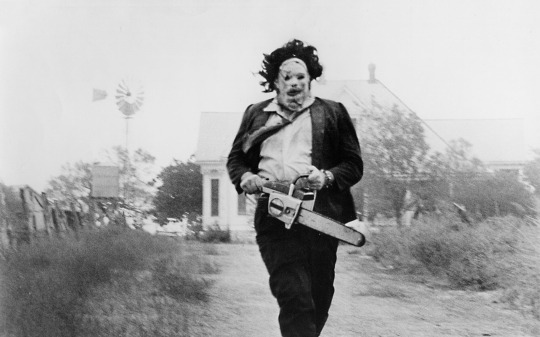
‘The Texas Chain Saw Massacre’ (1974), directed by Tobe Hooper.
With over 5,000 films logged on Letterboxd and a growing collection of posters, DVDs, Blu-rays, laser discs and film memorabilia, Cinemonster is a literal monster of cinema. He has created more than 500 lists, including a ton of year, director, actor, actress, franchise and memoriam lists.
What brought you to Letterboxd? I found Letterboxd while I was doing a Google search for a horror film that I had forgotten the name of. I ran into a list that Hollie Horror had made and wound up starting a profile and it went from there. That would have been a little over seven years ago.
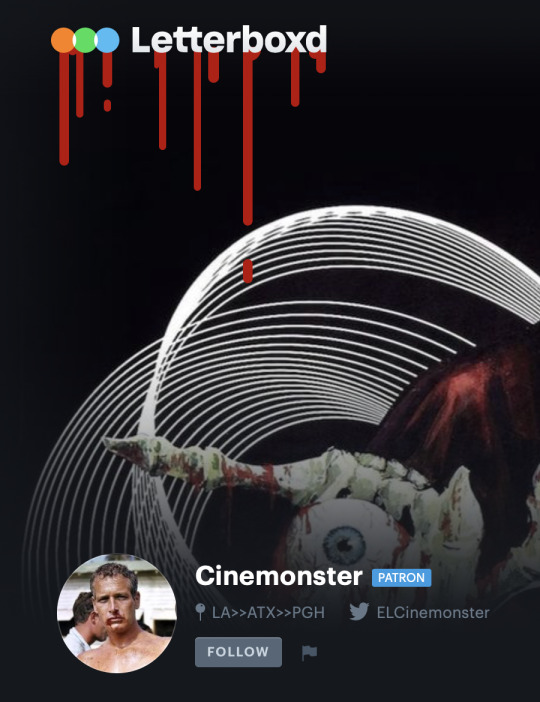
How freakin’ cool is last year’s Hallowe’en Easter egg with the dripping blood from our logo? [Pro members get this added to their pages by mentioning #horror in their bio.] I’m a fan.
Unfortunately I haven’t heard of a single one of your four profile favorites! What’s urging you to highlight these films? They are just lesser-seen and have something good or great about them. Eyeball is a great little underseen Umberto Lenzi film. Death Machines is an awkward, weird and wonderful film with kung fu and blood. Massacre at Central High is one of my favorite films and sadly lacking a disc release of any kind—anyone who has seen Heathers will recognize a couple of things if they watch it. Rituals is a criminally underseen stalked in the woods film from the ’70s.
In this this list description, you explain how the original Frankenstein (1931) hooked you into horror at four years old. Can you describe what you most remember about that life-changing experience? It was both magical and terrifying. The space, the creature, the little girl. I had trouble sleeping for weeks afterwards. No matter where I am in the world, if there is a screening of Frank, I’ll go. I watched most of the major universals by the time I was six or seven. I saw Alien and Jaws 2 with my folks and those stuck with me. Cable and a local UHF station showing Hammer films on Saturdays are what really allowed me to get sucked in.
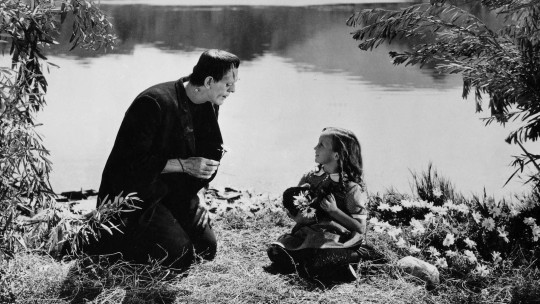
‘Frankenstein’ (1931), directed by James Whale.
The horror films of 1980 and 1981 were the most impactful and are the ones that mean the most to me to this day; Fade to Black, Night School, Motel Hell, The Fog, Alligator, Altered States, Terror Train, Death Ship, Scanners, An American Werewolf in London, The Howling, The Funhouse, Dead & Buried, Hell Night, Wolfen, Ghost Story, The Pit and Evilspeak. I saw all of them five to ten-plus times on cable as a kid. They’re still all high on my list. I am glad that Fade to Black is on Shudder. People need to watch it. More relevant now than then.
What exactly provoked you to start Hooptober seven years ago? I moved into an old spooky house and had a backlog of Blu-rays to watch and the 4K of The Texas Chain Saw Massacre was about to come out. I’d done some interactive stuff on Letterboxd previously and had a decent amount of people involved. I was also at a point in my life where 31 films in 31 days is tough, as it is for a lot of us now. So I thought ‘Why don’t I do something that starts a little early, clears some of my list out, and has some parameters that don’t feel like I am handing out an assignment?’ I grew up in Texas, Tobe [Hooper] is close to my heart, and with all the Hooper I owned and the 4K coming out, I decided to christen it with his name. You can’t spell October without Tobe.
What’s the most members that have participated in a Hooptober? The number of people who participated was a little more than I expected, but that wasn’t what I was surprised by. I never thought of it as a recurring event until I started to hear from people the following summer about ‘the next one’. I just kinda chuckled after about a dozen people had asked and I said out loud to no one, “I guess I’m doing another one of these”. We are well over 700 this year, and still climbing.
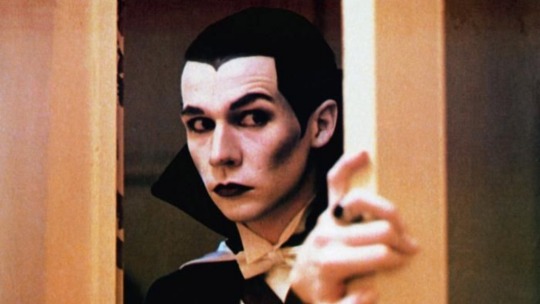
‘Fade to Black’ (1980), directed by Vernon Zimmerman.
Where do you get the ideas for the rules for films to consider watching? At this point, I look back at past years so that I don’t repeat myself. I look to the current year for inspiration. Is there a film from a sub-genre that was prominent? Was it a strong year for output from women, Mexico, Asia, Black filmmakers, something cultural, and so on? I may focus on effects creators, an actor or writer on a whim. I try to keep an eye out for blind spots I haven’t covered. Shudder, archive.org, the big streamers are all resources. Sadly, rarefilmm no longer exists.
In last year’s interview with Merry-Go-Round magazine, you mentioned plans to turn Hooptober into a film festival. How’s that going? In a post-pandemic world, how can we keep independent niche film festivals thriving? The world has not been agreeable, obviously. I’m not even sure how viable something like that will be next year. I’ve been taking a look at streaming options. Post-pandemic will require more creativity and outside-the-box thinking, and will probably continue to feed some drive-ins. Been a while since more than a handful of people wanted to put money into a drive-in, which is nice to see.
I’m going to do a tweet along to The Witch Who Came From the Sea in October, and I’ll give you an exclusive here: The George Romero Foundation and I are doing online Horror Trivia on October 11. I had been doing it live with them here in Pittsburgh until the pandemic.
Based on this year’s rules and conditions, if there was one essential you-can’t-miss film you could force all your participants to add to their challenge, which film would it be? Demons, Eve’s Bayou or The Witch Who Came From the Sea.
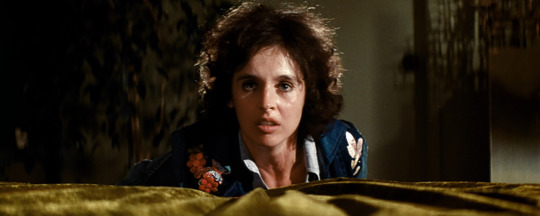
‘The Witch Who Came from the Sea’ (1976), directed by Matt Cimber.
What have been your own greatest film discoveries through your Hooptober adventures? A Tale of Two Sisters, I Drink Your Blood, Blood Diner, and though it is a bit of a cheat to list this one, The Amusement Park. It’s cheating because it didn’t exist as something that I or anyone else could have watched, prior to when I saw it.
Do you have any acclaimed horror movies still lingering in your list of shame? Eyes Without a Face, Upgrade, Cure and Scream 4.
Have you ever completed one of your own Hooptober challenges yet? Errrrrrrrrr, one. I’m on track this year.
What about the participants over the years—any Letterboxd friends you’ve made who would you like to give a shout-out to? Aaron, Sarah Jane and Chris Duck are people that I talk to outside of Letterboxd. There have been a few others over the years. Slappy McGee has helped me with Hooptober the last two years. They are great. Javo and David Lawrence are pretty great, too.
Before Hooptober, many of your lists invited discussion with your followers. In what ways is Letterboxd the ideal forum to foster a community of film fans? Fans exercise their fandom in so many ways. The platform is so flexible that it allows you to utilize it in a small and personal way, in a promotional way, or to dive into the community pool and see who’s out there that shares something with you or can show you something. The more people that we are exposed to and listen to, we are all the better for.
Which of your review—from any genre—are you proudest of? The Invisible Man or The Hustler, probably. I have a capsule of Hud that I like.
So, you’re the horror guy. Nobody is denying that. You are Cinemonster, after all. But when I look at your top movies list and see that Singin’ in the Rain is your all-time number one, I’ll need you to explain yourself. I go back and forth between that and Butch Cassidy and the Sundance Kid. They are 1A and 1B in some order. Singin’ in the Rain is a perfect film and the studio system at its best. I will ignore your implied insult. ;)
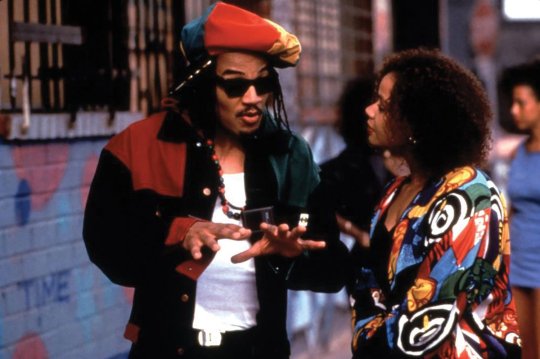
‘Fear of a Black Hat’ (1993), directed by Rusty Cundieff.
It’s true, even a horror aficionado needs some levity in their life. What other comedies pick you up from a dark place? Fear of a Black Hat always does the trick. Same with The Awful Truth, Murder by Death, Hollywood Shuffle, Walk Hard: The Dewey Cox Story, Blazing Saddles, Monty Python and the Holy Grail and Black Dynamite.
Who has been keeping you company during this tough year? I have watched thirteen Spike Lee films so far this year. I’ve taken a break the last few months, but I’ll probably knock out five or six more. With the exception of 25th Hour, everything is a revisit. It’s been a joy to go back through everything. Crooklyn is much stronger than I remembered, and Bamboozled just gets better and more impactful as time passes. I have loved Spike since the day I saw School Daze. His films have always connected with things that are important to me and to those that have been around me. Lee is still grossly under-appreciated as a narrative film director and a documentarian.
We’re bowing down to your epic Blu-ray and DVD collection. Which ones are your most prized possessions? Make us jealous. I have an Anchor Bay DVD of Dawn of the Dead signed by the cast and George A. Romero, a steelbook of Battle Royale, the first Slumber Party Massacre set before they had to reprint the box, the original Star Wars trilogy on Blu. I’m sure there are things I’m not thinking of. I have a lot of out-of-print and laser-only stuff. I’ll never get rid of my Holy Grail, Ghostbusters and Akira Criterion laser discs.

A selection of Cinemonster’s signed memorabilia.
I have a copy of Painting with Light signed by John Alton, John Waters and Steven Soderbergh I’ll send you a picture of. I used to collect movie posters, and I have the original Revenge of the Jedi one-sheet and the Drew Struzan Squirm poster. I do love those.
From your top directors list, let’s put one horror director on a pedestal. Who does the genre better than anyone else and why? George. They’re always topical, intelligent, thoughtful, personal and sometimes prescient. At their best they hold up both a mirror and a crystal ball. He was writing found-footage scripts in the early 70s, for god’s sake. Tobe is grossly under-appreciated. James Whale and Mario Bava could scare you in so many ways.
So, thinking beyond Ari Aster, Robert Eggers and Jordan Peele, which up-and-coming horror directors are you most excited about? Issa López, Gigi Saúl Guerrero, Benson and Moorhead, Shinichiro Ueda, Na Hong-jin, Julia Ducournau, Nia DaCosta, Jeremy Gardner and Leigh Whannell.
The 2010s were a great decade for horror. We have more money on-screen, moving away from the low-budget films of the 2000s. Which favorite horror film of the last decade inspired you the most? Get Out. What Jordan did for generations to come is unmatched in this century.
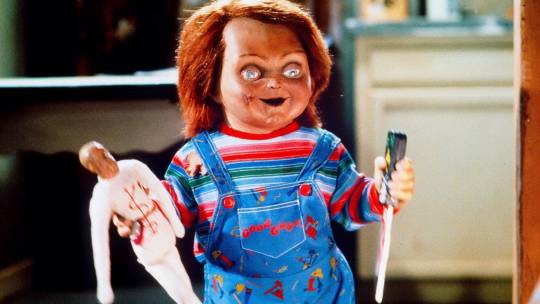
Chucky from ‘Child’s Play’ (1988).
Which probably-too-long horror franchise gets too much flak and is top-to-bottom a great time? Child’s Play. Chucky has always been treated generally as second tier. [That franchise] has tried a lot of interesting and out-there things during its lifespan that had no business working, but did.
I know it’s been a slow year but you haven’t logged many 2020 movies yet! Which is your most anticipated horror movie of 2020 or 2021? Peninsula, for sure; I love Train to Busan. Then Candyman, The Dark and the Wicked, Grizzly II: Revenge, Bad Hair, #Alive, After Midnight, The Platform, Bulbbul, Underwater, Shirley and Swallow.
Interview by Jack Moulton. Follow Jack on Letterboxd.
#letterboxd#how i letterboxd#cinemonster#el cinemonster#elcinemonster#horror#horror films#horror genre#tobe hoooper#tobe hooper#hooptober#hoop-tober#halloween#halloween films#halloween challenge#letterboxd challenge
6 notes
·
View notes
Photo

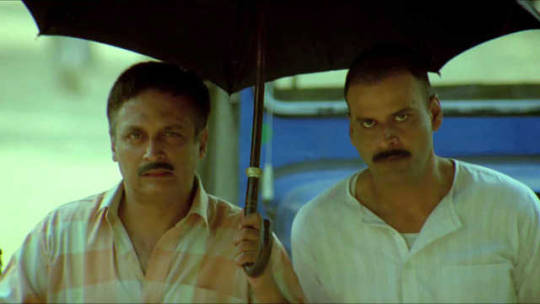
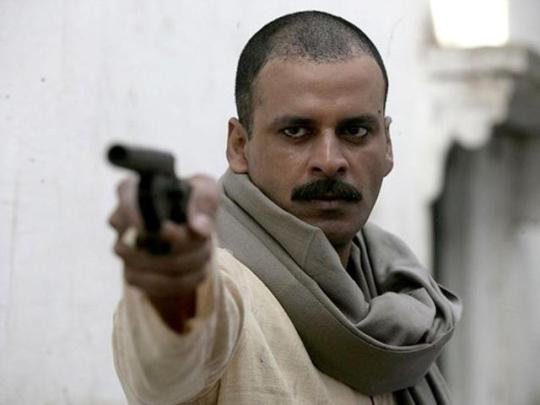
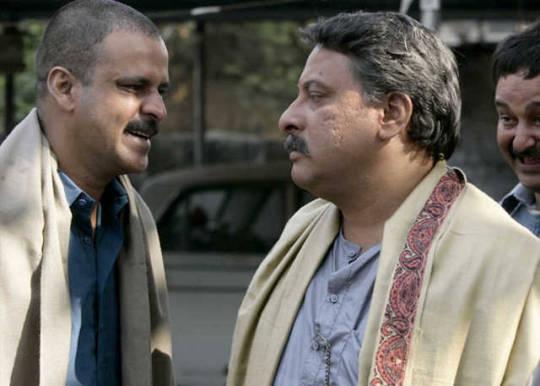
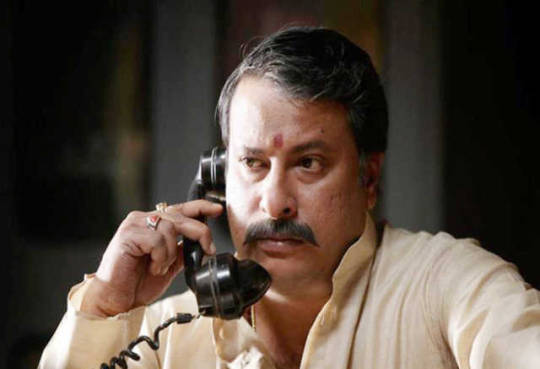

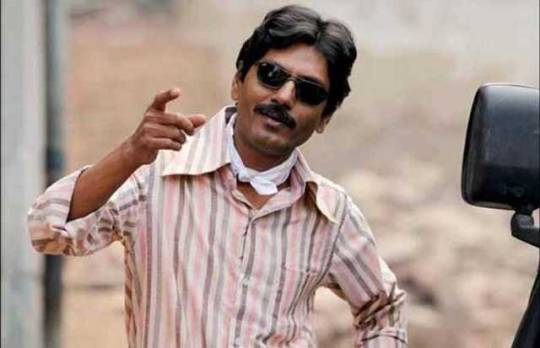


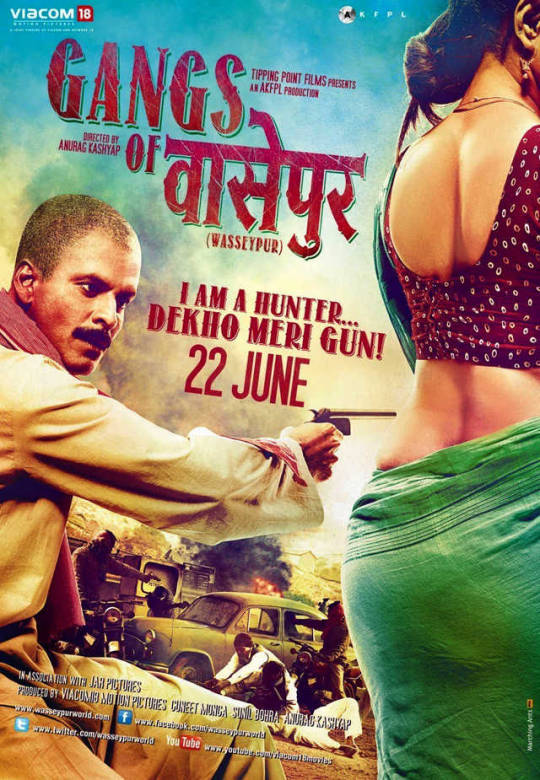
7 Years of #GangsofWasseypur Part 1 (22/06/2012) Gangs of Wasseypur – Part 1 is a crime film directed by Anurag Kashyap and written by Anurag Kashyap and Zeishan Quadri. It is the first installment of the Gangs of Wasseypur series, centered on the coal mafia of Dhanbad, Jharkhand, and the underlying power struggles, politics and vengeance between three crime families. Part 1 features an ensemble cast with Manoj Bajpayee, Nawazuddin Siddiqui, Richa Chadda, Huma Qureshi, Piyush Mishra, Vineet Kumar Singh, Tigmanshu Dhulia and Pankaj Tripathi in the major roles. Its story spans from the early 1940s to the mid-1990s. Both parts were originally shot as a single film measuring a total of 319 minutes and screened at the 2012 Cannes Directors' Fortnight but since no Indian theatre would volunteer to screen a five-plus hour film, it was divided into two parts (160 minutes and 159 minutes respectively) for the Indian market. The film received an A certification from the Indian Censor Board. The film's soundtrack is heavily influenced by traditional Indian folk songs. Gangs of Wasseypur was screened at the Sundance Film Festival in January 2013. Gangs of Wasseypur has won four nominations, including best film and best director, at the 55th Asia-Pacific Film Festival. The combined film won the Best Audiography, Re-recordist's of the Final Mixed Track (Alok De, Sinoy Joseph, and Shreejesh Nair) and Special Mention for acting (Nawazuddin Siddiqui) at the 60th National Film Awards. The film collected four Filmfare Awards, including Best Film (Critics) and Best Actress (Critics), at the 58th Filmfare Awards
#gangs of wasseypur#anurag kashyap#zeishan quadri#manoj bajpayee#nawazuddin siddiqui#richa chadda#huma qureshi#piyush mishra#vineet kumar singh#tigmanshu dhulia#pankaj tripathi#bollywood#bollywoodirect#bollywood news
26 notes
·
View notes
Photo


BART CHAT 7/1/19
Hi all,
The York New Times had a good piece last week about the future of film in theaters entitledHow will the movies (as we know them) survive the next 10 years.?
They talked about many important people, but mainly industry people; there is very little discussion about how art houses like The Texas Theater have found a way to thrive and keep cinematic arts and culture alive. In so many small and large towns, really dedicated people are screening great work. It feels so similar to all the articles about the death of Apple Computers, so I think it’s safe to say cinema is not going to die, just transform. I will say though, this summer is not very exciting cinema wise, but I’m hoping that will change when the temperature drops a bit.
There are several summer festivals coming up soon, including our Dallas Medianale. There are several summer festivals coming up soon, including our Dallas Medianale. For those who have been paying attention, Dallas Medianale Part I, at the MAC is up until July 14th, so make sure you check that out. There will be a curator’s tour on July 10th at 7 PM with free cocktails, so come hear Dee give you details about the show. Part II of the Medianale will be on July 17th and 18th at the Latino Cultural Center. This is the single channel (meaning, not an installation) experimental film, video art, and live video performance fest that also includes 3 installations.
This year we are featuring work from many Dallas Video Artists including Carolyn Sortor, Richard Bailey, Tim Best, Jeremy McKane, Colette Copeland, and Tamitha Curiel. We also have work from Video Fest favorites such as Jem Cohen, Eden Valdez, Kelly Sears, Wago Kreider, Van McElwee, Bill,, Brown, and Dianne Nerwen. There are videos from Israel, Australia, London, Japan, Thailand, and Switzerland.
The videos are being shown in blocks on Wednesday. The block times are 2-3:30, 4-5:30 , 6:30-7:45 and 8:30-10. Thursday, we have a block of short films from 4-5:30 and at 7:30 we have some great live performances from Mike Morris, Dean Terry, Dallas Ambient Movie Nights and Scott Stark who is traveling from San Francisco with his portable 35mm projector to show a performance that I’ve been hearing about for a while. This is NOT TO BE MISSED!
Oh, did I mention that all of the above is free?
To help pay for this, we are having a fundraiser/ 66th birthday party on July 11th at the California Pizza Kitchen. When you purchase your meal mention Video Association of Dallas.and follow the Pizza Kitchen's instructions to receive 20% of your meal's price donated back to VAD.
So, what else is happening around town? Next Tuesday, July 9th there is an industry mixer for the many professional film organizations in town. The VideoFest (while not listed) will be part of these events, so come and say hello and bring your business cards with you. Speaking of organizations, I serve on the advisory board of EarthX Film. We had a meeting last week and they are gearing up to bring us some very impressive work.
Also, coming up soon is the Asian Film Festival Dallas from July 18th to July 21 at the Angelika Theater. Unfortunately, as of this writing (Sunday evening), the schedule is not up, so I have no clue what they are showing this year, but it is usually a very strong mix of films of all styles from all over Asia. They have great films and a great organization, so check that festival out.
The Texas Theatre is showing a 4K restoration of Last Year at Marienbad. which is an amazing film, a classic of The French New Wave, by Alain Resnais. It is dreamy, beautiful, trippy, and a cinematic experience that is not very meaningful when viewed on a mobile device. Coming together and seeing this with an audience at our art house theater will make you feel like you are part of keeping cinema alive. Also, on Saturday, they will be showing Oliver Stone’s Born on the Fourth of July. I know say this often, but I really wonder how this film will play now. How will it resonate with our current political situation? I think it will play well, but differently than when it was made.
Around town, tonight (if you are reading this on Monday) the Angelika is showing Silence of the Lambs and The Magnolia’s Tuesday night classic is Butch Cassidy and the Sundance Kid, which is a good and fun film.
Bart Weiss
Artistic Director, Dallas VideoFest
3 notes
·
View notes
Text
It’s Official – Sundance Film Festival Asia is Coming to Taiwan
Sundance Institute Partners with G2Go Entertainment to Invigorate Local Independent Arts Launches Short Film Competition in Support of Upcoming Asian festival, Submissions Now Open On 23 May, 2023, G2Go Entertainment officially announced the 2023 edition of Sundance Film Festival Asia, coming to Taipei, Taiwan this August 18 – 20. This is the first time the annual Sundance Film Festival Asia…
View On WordPress
0 notes
Text
My Sundance Experience: A First

As you probably already know this is my first time ever attending Sundance. Even though it was all virtual this year, I had a great time. I really enjoyed all the films I watched, but I also really liked being able to explore other events they had.
So at Sundance you can purchase an explorer pass that lets you into their New Frontier “Spaceship.” You can access a multitude of things from here, whether that be the cinema house where you can watch live premieres, the gallery where you can access virtual reality, and a party house where you can mingle with other people who have seen similar things you have. It was fun to run around and see what was there, but it wasn’t as full of people as I thought it would be. I also didn’t go on super late at night when the supposed “parties” were, so maybe I’ll try that in the future.
I attended a cinema café talk with Karen Gillan and Emma Thompson. Talked about their films Dual and Good Luck To You Leo Grande respectively. Both of these actors I have seen in other films like Avengers and Harry Potter, so it was cool to see them talk about the independent films they were in. I also watched Film Talk: Free Chol Soo Lee after I watched the actual documentary. They talked about why they chose to do a story on Chol Soo Lee and why they thought it was important to bring awareness to. The creators also talked to people who were directly involved in the case, so it allowed the story to be told word for word. Then I attended the film talk about 892, the first Sundance film I watched. I believe these events are free to all public and you can see and watch them here.
Aside from these “talks” I also tried to attend the Asia Society, but I didn’t realize you had to register and that it only showed at a certain time. So that was a fault on my part. There were just so many things I wanted to watch, but I had other screenings at those times.
I found the secret karaoke rooms that were in the spaceship and had fun in there for a few minutes. I didn’t really interact with anyone when I was in party rooms because either there was no one there or I didn’t want to talk to anyone because there was no text option. I did have trouble with the cinema house for some reason. I would try to attend an event or live premiere, but then like a few seconds in, it would kick me out and not let me back in. I do wish we had more time with the VR headsets because it was really cool to be immersed in a story and feel like you’re actually experiencing it.
I felt like there were so many things to attend and watch, but in so little time! I’ll definitely be staying in tune for next year's film festival and maybe one day I’ll be able to go in person.
Stefanie Lorimer
0 notes
Photo

Back in 1991, the Sundance Film Festival introduced the Midnight category as a “special showcase of the most challenging but rewarding film experiences from around the world brought to you at the most arduous hour,” which—when you put it that way—sounds pretty lame. But actually these are the craziest, scariest, most unruly and bizarre films that our programmers could find, and here are a couple of our favorites from throughout the years.
Pictured above: Delicatessen | 1992 SFF, dir. Jean Pierre Jeunet
“The old building stands somewhat apart from the rest of the city, against a backdrop of desolation; on its first floor is a butcher shop. Unfortunately food supplies are very short, but all the building’s residents manage to eat and eat well, having secured a steady source of meat.” -Geoff Gilmore

Tokyo Fist | 1996 SFF, dir. Shinya Tsuskamoto
“Flying from the screen in a tidal wave of pummeling fists, blood-spurting noses, and unbridled eroticism, Tokyo Fist is a masterpiece of style and substance from one of Asia’s most exciting young talents.” -Noah Cowan, Toronto Film Festival

Pink Flamingos | SFF 1999, dir. John Waters
“Subtitled “an exercise in bad taste,” Pink Flamingos takes on and demolishes just about every known middle-class value.” -Barbara Bannon

May | SFF 2002, dir. Lucky McKee
“A modern day retelling of 'Frankenstein' that follows a young woman's failed attempts to find a true friend and the horrific steps she takes to make one.”

Black Dynamite | SFF 2009, dir. Scott Sanders
“When ‘the man’ kills his brother, pumps heroin into the local orphanage, and floods the ghetto with a secret weapon disguised as Anaconda Malt Liquor, there is only one brother bad enough, strong enough, and brave enough to take them on: the legendary Black Dynamite.“ -John Cooper

Magic Magic | SFF 2012, dir. Sebastian Silva
“If Alicia could just get some sleep, everything would be all right. As she and her cousin Sarah make their way through rural Chile with Sarah’s boyfriend, his sister, and their strange American friend Brink, Alicia’s insomnia slowly takes control.” -M.P.

Under the Shadow | SFF 2016, dir. Babak Anvari
“Tehran, 1988: As the Iran-Iraq War rumbles into its eighth year, a mother and daughter are slowly torn apart by the bombing campaigns on the city coupled with the country's bloody revolution. As they struggle to stay together amidst these terrors, a mysterious evil stalks through their apartment.”
Film stills courtesy of Delicatessen, Tokyo Fist, Pink Flamingos (© 1997 Fine Line Features, photo by Lawrence Irvine), May, Magic Magic, and Under the Shadow (photo by Kit Fraser)
#midnight movie#movie#film#sundance#sundance film festival#horror#weird#bizarre#Delicatessen#Tokyo Fist#Pink Flamingos#May#Black Dynamite#Magic Magic#Under the Shadow
366 notes
·
View notes
Text
0 notes
Text
Gender-neutral fashion: fluidity as freedom
New Post has been published on https://fashiondesigne.com/gender-neutral-fashion-fluidity-as-freedom/
Gender-neutral fashion: fluidity as freedom
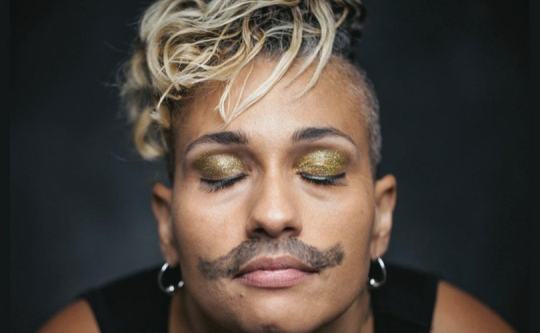

Aileen Yu
|
Thursday, ���04 February 2021
Is gender-neutral fashion an upcoming trend? Styles for Springtime 2021 saw a growing number of big companies champion gender-fluid, unisex or even polysexual fashions with Marc Jacob’s “Heaven” capsule plus fluid collections from creative designers Balenciaga and Stella McCartney. “Marc has long been a who trust that clothing itself is just not inherently gendered, rather modern society norms have previously established certain garments are for many people, (we) see a lot of hope in today’s youngsters, that these limiting ‘rules’ are usually increasingly no longer relevant, having a renewed courage to be yourself, ” Eric Marechalle, the particular CEO of Marc Jacobs International told WWD within a recent report.
A 2018 study by The Advocate discovered that thirty-three percent of those in Gen-Z identify as something apart from exclusively heterosexual, the highest number of any kind of generation up. A quick browse Tik Tok shows that the particular hashtag for polysexuality offers almost 10, 000 sights and is still growing since content creators produce a lot more videos surrounding polysexual identification and polysexual people. Upon Instagram, the hashtag provides over 1, 000, 1000 tags.
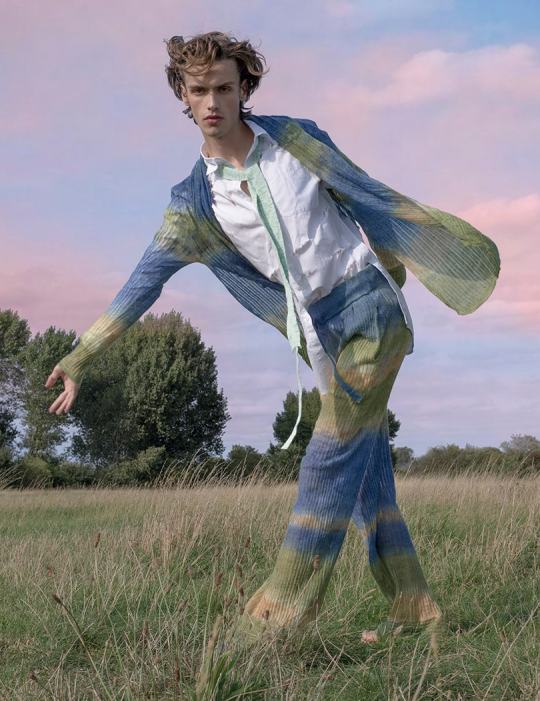
Gender-fluid appears took over New York Men’s Time SS21
During the most recent New York Men’s Time, gender-fluid fashion became one of the greatest highlights of the digital event. Apotts, Ka Wa Key, Standard Rebrand, and Wataru Tominaga all presented gender liquid collections. Apotts’ collection communicated the message that no matter race or gender, everyone can enjoy playing dress up. To get MI Leggett of Formal Rebrand, gender-fluid fashion is never a trend, but the whole antithesis of their brand GENETICS. This season, the designer, who seem to identifies as non-binary plus uses they/them/their pronouns, concentrated their collection on anti-waste urgency and social unrest throughout history.
youtube
A voice for the voiceless through a prism of fluidity
In many areas of the world, the LGBT plus gender-neutral community is still fulfilled with hostility and assault. Gucci‘s global campaign Agreement For Change released the particular short film ‘The Future is certainly Fluid’ —which premiered throughout Sundance Film Festival 2019— as a companion to The Abnormal Report, a biannual document on and by Gen Unces. The voices in the movie represent this generation’s tenaciousness, curiosity, empathy, optimism plus hope, redefining and symbolizing the world through a prism associated with fluidity. In the video, a single Gen Zer expressed, “I hold myself responsible to keep advocating and fighting for your rights of trans plus non-binary youth because You will find the privilege to. ” “If we start seeing this particular fluid approach we can start to see all the barriers open up, ” another Gen Z recommend added.

Genderless style: East Asia’s social demonstration
Avant-garde plus genderless fashion has had a lengthy heritage in Japan, initiated by revered designers Telles des Garçons and Yohji Yamamoto. So it’s not surprising that will genderless youth fill the road of Harajuka, the capital’s hub of subculture plus streetwear trends. Since 2016, Tokyo’s youth movement continues to be rejecting ideas of style defining sexuality through makeup, clothes and Instagram filter systems that draws from Japan anime’s fluid beauty requirements. In this documentary, i-D Journal met the individuals at the rear of Tokyo’s most boundary pressing scene. Yutaro told audiences, “sometimes I’m jealous associated with girls when it comes to fashion. They could wear trousers and dresses without being told off designed for wearing boy’s clothes. ” A unisex girl, Satsuki, further stated, “since I actually started wearing genderless clothing, I’ve come to realise that the world-view can be totally transformed through fashion. ”
youtube
According to Mintel, a London-based market research company, in 2019 K-beauty exports have grown to 2 . sixty four billion US dollars. Popular South Korean media continuously promotes the ‘perfect feminine appearance’ which usually includes a porcelain complexion, luxuriant long curly hair, lots of makeup, form-fitting gowns paired with stilettos. Based on the NPR article, “South Korean Women ‘Escape The Corset’ And Reject Their State’s Beauty Ideals”, women within the nation are rebelling along with genderless fashion, cutting their head of hair and wearing no make-up as a feminist protest contrary to the patriarchal gaze.
Photos: Pexels by Lhairton Kelvin Costa, courtesy of Agentry PR, Gui Gomes
0 notes
Text
2023 Sundance Film Festival Asia arrives in Taipei on 18-20 August 2023
Reveals lineup for the festival – Single Film Tickets to go on sale 31 July 2023 Stay updated for on-sale announcements via our website http://www.sundanceffasia.com Sundance Film Festival Asia announced today the lineup of feature films for the 2023 festival, taking place for the first time in Taipei, Taiwan at SPOT Huashan Cinema from 18-20 August. This is the first time the festival has…
View On WordPress
0 notes